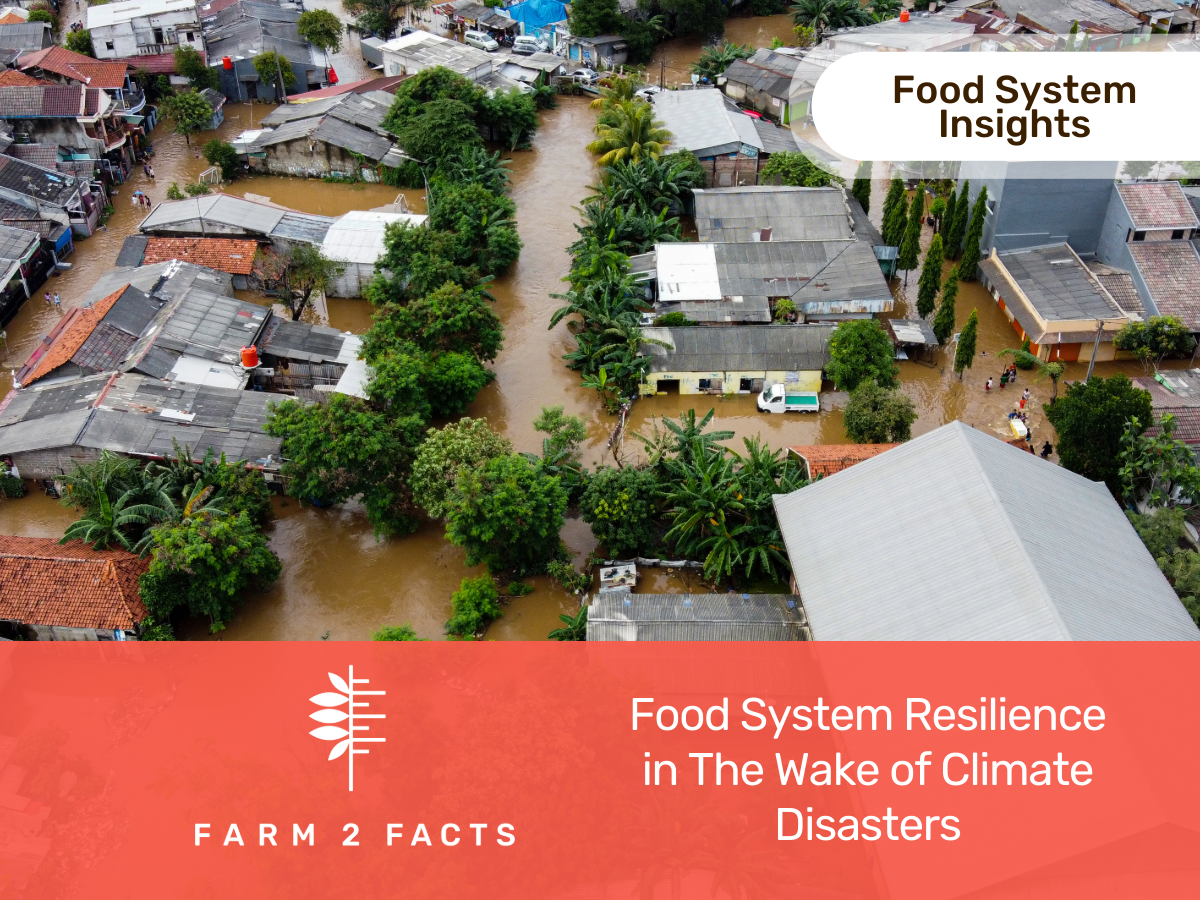
By Olivia Nygaard
As climate change intensifies storms around the world, communities are forced to rethink what food system resilience really means. Hurricanes, floods, and other weather crises don’t just disrupt transportation or power grids; they test the very foundations of how we grow, distribute, and access food.
Right now, Hurricane Melissa is doing exactly that. The powerful Category 5 storm is battering parts of the Caribbean, bringing extreme winds, heavy flooding, and widespread agricultural damage. Unfortunately, early reports are showing that cropland, rural roads, and local markets are being heavily affected. This threatens both food availability and livelihoods.
How Hurricanes Disrupt Food Systems
When a major storm hits, every link in the food chain feels the impact. In the production aspect, wind, saltwater intrusion, and flooding destroy crops. Livestock and fisheries also face major losses too.
With transportation, flooded roads and washed-out bridges cut farmers off from markets and consumers from stores. Power outages that stop refrigeration and food preservation, and end up leading to massive spoilage, effect food distribution. And last but certainly not least, access and equity disruptions show themselves in low-income and rural communities, as they often face the longest recovery times and the most limited food access.
Natural disasters, like hurricanes, reveal how tightly connected our food networks are, and how fragile those connections can become overnight.
Adapting Through Local Food Networks
Farmers markets and community-based food organizations often become lifelines in these moments. Their small scale, flexibility, and strong local relationships allow them to adapt faster than large-scale supply chains.
There are many examples of this. Firstly, market managers quickly relocate operations or coordinate mobile markets in safer areas. Vendors have the ability to communicate directly with customers to share what’s available and where. And even locals can help, by pooling transportation and resources to keep food flowing even when larger distributor pause operations.
These networks also play an important role in recovery. Once conditions stabilize, they help rebuild local economies and reconnect farmers with consumers.
Data And Preparedness as Tools For Resilience
Technology and communication are becoming just as essential as tractors or trucks. Moreover, reliable data helps communities plan ahead for disasters and recover more efficiently afterward. Knowing which vendors are located in flood-prone zones, how quickly markets can reopen, and which communities rely most heavily on local produce can therefore guide emergency response and strengthen long-term resilience.
Projects like Farm2Facts, and the new FEAST model being developed in the Kaufman Lab, are part of this broader movement toward smarter, data-informed food systems. By tracking and visualizing market-level data, communities can better anticipate risks, coordinate recovery efforts, and strengthen their long-term sustainability.
Moving Forward
The current events of Hurricane Melissa are a powerful reminder that food-system resilience isn’t just about bouncing back, it’s about building systems designed to endure. Strengthening local networks, supporting data collection, and prioritizing equity in recovery efforts are all essential steps.
Whether it’s a hurricane in the Caribbean or flooding in the Midwest, resilient food systems depend on collaboration between farmers, market managers, policymakers, and researchers. Every disaster offers new lessons on how to protect not only our food, but the people and communities behind it.
